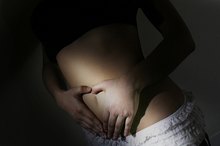The Process of Human Reproduction
Sexual Intercourse
Sexual intercourse is the reproductive act in which semen can be expelled into the female via male ejaculation. During sexual intercourse, the male inserts an erect penis into the vagina, and the bodies move together until ejaculation occurs. Once semen is expelled into the vagina, sperm swim through the cervix and uterus until they reach the Fallopian tubes. If the female has ovulated, the mature egg is waiting within one of the Fallopian tubes.
If you are experiencing serious medical symptoms, seek emergency treatment immediately.
- Sexual intercourse is the reproductive act in which semen can be expelled into the female via male ejaculation.
- During sexual intercourse, the male inserts an erect penis into the vagina, and the bodies move together until ejaculation occurs.
Conception
How Long Does Sperm Stay in a Woman's Body?
Learn More
Conception occurs when a single sperm penetrates the egg and fuses together. This process is called fertilization 1. Once the mature egg is fertilized, the egg travels down the Fallopian tube to the uterus. Once the fertilized egg is in the uterus, it begins to implant into the wall of the uterus 1. If the egg successfully implants, pregnancy has been achieved and the egg is referred to as an embryo.
Pregnancy
The normal pregnancy lasts between 38 to 42 weeks. During this time, the embryo forms the vital organs that must be present in order for the fetus to live outside of the uterus. The embryo is attached to the mother by the umbilical cord, and receives all of the nutrients needed by this connection. Once the pregnancy reaches nine weeks, the embryo is known as a fetus until birth.
- The normal pregnancy lasts between 38 to 42 weeks.
- The embryo is attached to the mother by the umbilical cord, and receives all of the nutrients needed by this connection.
Birth
About Normal Spontaneous Vaginal Delivery
Learn More
Birth is when the fetus is expelled. Hormones inside the mother begin a process called labor, which slowly pushes the fetus out of the vagina (known as the birth canal during this process). Labor is recognized by strong and painful muscle spasms that are frequent and maintain a regular pattern. Once birth has occurred, the fetus is an infant and is considered the final step of reproduction.
- Birth is when the fetus is expelled.
- Once birth has occurred, the fetus is an infant and is considered the final step of reproduction.
Related Articles
References
- Taking Charge of Your Fertility; Toni Weschler; 2006
Writer Bio
Combining his medical and journalism experience, Edward Thomas has been writing professionally since 1990 and currently provides content for several websites including eHow.com. Thomas was a featured health writer for the Knoxville Sentinal for 7 years and holds a Masters in Nursing from the University of Tennessee.








